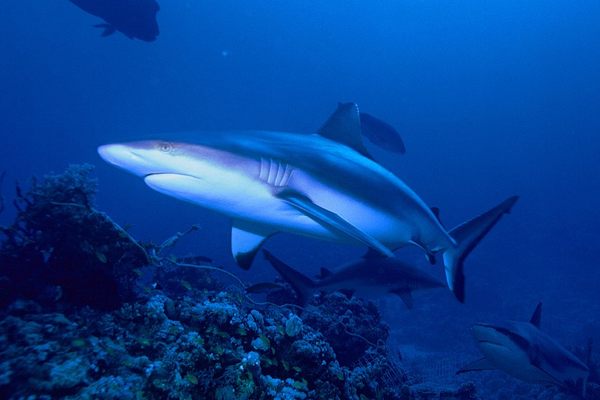A Sea Scum Bloom Off Australia Can Be Seen From Space
The massive strands of microbes are actually a vital part of the global nitrogen cycle.

Algal or bacterial blooms in lakes and oceans—all too common these days—are known for being a bright, sickly green or maybe an alarming red. But right now, off the coast of Australia, it looks more like sawdust is floating on the surface of the water. The “sea sawdust,” also called “sea scum,” is a microscopic cyanobacterium known as Trichodesmium that can photosynthesize and convert atmospheric nitrogen into ammonia. Its long, filament-like blooms were spotted by NASA’s Landsat 8 satellite in early September.
Charles Darwin described passing through a Trichodesmium bloom off the western coast of Australia in The Voyage of the Beagle, published in 1839: “The whole surface of the water, as it appeared under a weak lens, seemed as if covered by chopped bits of hay, with their ends jagged. … Their numbers must be infinite: the ship passed through several bands of them, one of which was about ten yards wide, and, judging from the mud-like colour of the water, at least two and a half miles long.” According to Darwin, a red-colored species of Trichodesmium is what earned the Red Sea its name, and Captain Cook’s sailors gave the Australian blooms the name “sea sawdust.” Some blooms can appear green, and when they wash up on shore, they tend to look a bit like an oil spill.

The cyanobacterium’s population rapidly increases as the water gets warmer between August and December, the southern hemisphere’s summer. Large blooms can deplete the oxygen in the water, and kill fish in the area. But the microbes are a vital part of the global nitrogen cycle. Their ability to convert nitrogen gas to ammonia, called nitrogen fixation, makes the molecule available for other photosynthesizing microbes, such as algae and bacteria, and releases oxygen in the process. They fix an estimated 150 billion pounds of nitrogen each year, a considerable fraction of the 200 to 400 billion pounds fixed annually in the ocean. That’s a big impact for something so small.




















Follow us on Twitter to get the latest on the world's hidden wonders.
Like us on Facebook to get the latest on the world's hidden wonders.
Follow us on Twitter Like us on Facebook